The correct cultivation of tea at home
Few people know that tea can be grown independently at home. In addition to excellent taste, this plant will give the owner a true aesthetic pleasure, delighting him with its lush evergreen crown. The homeland of tea is Indochina, and the history goes back more than one millennium.
The true name of the plant is Chinese camellia. Most of the tea bushes can grow up to 4 meters, but there are also tea trees, their height can reach up to 18 meters. Naturally, we will talk about a tea bush, which is easy to grow in a pot on a windowsill. The main advantage of tea is its unattractiveness to pests and extremely rare cases of diseases.
Content:
- Seed preparation and planting rules
- Tea Care Tips
- How to grow tea in your garden?
- How to harvest and prepare tea correctly
- The benefits of tea and contraindications for drinking
Seed preparation and planting rules
The easiest way to grow tea from seed... When buying, you should pay attention to the appearance of the seed: it should be brown and without any damage.
You can start disembarking at the end of February.
Seeds must be soaked in water for three days before planting. Those that have surfaced are thrown away, and those lying at the bottom are suitable for landing. The soil for planting tea should have the following composition: peat (top) and coniferous soil (soil layer under coniferous trees).
Landing rules:
- It is necessary to put drainage into the container for planting, and then add soil.
- Seeds are planted to a depth of three centimeters, then watered with water.
- Glass should be placed on top of the container to create a greenhouse effect.
- The glass will need to be turned over and wiped clean.
- It is important to keep the soil moist at all times and spray her at least twice a week.
Seeds sprout in two to three months. The first shoots may die, but do not be upset, new shoots will sprout behind them. After a year, the tea bush will reach 30 cm. It will also bloom, which will give its seeds. After three to four years, the bush requires transplanting into a larger container.
Tea Care Tips
Basic rules for tea care:
- The tea bush should be placed in a bright place, but at the same time avoiding the scorching sun. In winter, the temperature can be cool, about 15 degrees.
- Tea requires abundant and constant glaze... Before flowering, watering will need to be reduced, partially replacing it with spraying.
- During the summer, you can put the pot of tea outdoors.
- In case of overgrowth, the bush should be pruned to form a beautiful foliage cap.
- The tea bush can be fed with the most common fertilizers for flowers. You can also use manure or bird droppings.
- It is worth loosening the soil every 5 waterings.
How to grow tea in your garden?
For growing tea outdoors, it is worth choosing frost-resistant varieties. Ordinary Indian tea can withstand temperatures up to -4 degrees, so it can only grow in greenhouse conditions. However, there are also varieties that can easily tolerate 20-degree frosts, for the winter they just need to be covered.
As a rule, the first seedlings grown from seeds. After the tea bushes have taken root in the open field, it will be possible to propagate them using cuttings... The main increase occurs already in the second year from the moment of planting.
Tea bushes require pruning at least twice a year, due to which there is a very active growth of new leaves.
The tea is fed with superphosphates. You can start fertilizing the soil when about five leaves appear on the sprout. Tea plantings are very fond of mulching peat. The soil must be acidic. Do not plant tea in soil that contains a large amount of lime. In this case, the foliage will wither and the plant will not take root.
The site should be chosen sunny, avoiding lowlands, since tea bushes do not like stagnant liquid and waterlogging of the soil. However, in dry weather, an adult bush may require about a bucket of water for quality glaze... Of course, it is worth taking care of good drainage in advance. The best part is that tea bushes are practically not susceptible to attack by pests and disease. On rare occasions, tea bushes may show signs of rust or powdery mildew, however, this problem is easily solved by Bordeaux liquid and colloidal sulfur.
How to harvest and prepare tea correctly
The collection of tea leaves can be carried out two years after planting. It is very important to collect the tea leaves before applying to the soil. fertilizers... At the same time, the top three leaves and a bud are torn off. You can simply grind the leaves between your palms and brew it already in this form.
And you can start making a certain type of tea. This is not as difficult as it seems at first glance:
- Green tea. This species does not undergo fermentation. After collecting it, it is enough to simply dry it, while treating the leaves with hot steam. It is thanks to this procedure that the tea remains green.
- Black tea. This type of tea involves fermentation. The collected leaves are left to dry for 12 hours, or you can send them to the freezer without waiting for freezing. Then they are rolled up and placed in a warm place for the fermentation process, covered with a damp cloth. After acquiring a characteristic dark color, the tea leaves are finally dried. Then they are ready to use.
- Red tea. This type of tea involves incomplete fermentation. The difference with black tea lies in the shortening of the fermentation process.
The benefits of tea and contraindications for drinking
Tea is very useful for the body, and this is another reason to grow a bush with this beautiful plant on your windowsill. Green tea is considered healthier than black tea. However, black also has a sufficient number of useful properties.
A typical cup of aromatic tea has the following properties:
- Is the prevention of cancer.
- It is an excellent immunomodulator.
- It is able to lower cholesterol levels due to the presence of polyphenols.
- Tones up the body and helps to fight extra pounds, thanks to alkaloids.
- Possesses antimicrobial properties due to tannins in the drink.
For greater benefits, you can add various herbs to the tea, which will only enhance the medicinal properties of the drink.
Despite a lot of useful properties, tea has some contraindications. For some people, tea consumption should be reduced or eliminated:
- If there is an ulcer. Tea increases acidity, thereby interfering with healing.
- In the presence of severe forms of hypertension and atherosclerosis. In this case, the use of strong tea is prohibited, since caffeine contributes to the narrowing of blood vessels and the formation of blood clots in them.
- If you have insomnia. The caffeine content in tea will be a poor helper for a person who finds it extremely difficult to fall asleep.
Growing tea at home is a very interesting experience. After all, growing tea will not be difficult, while it will become the real pride of any gardener.
More information can be found in the video:



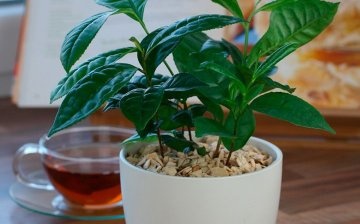

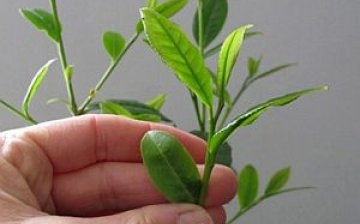

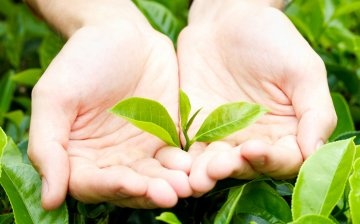
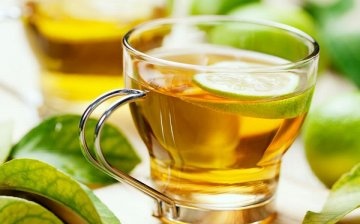








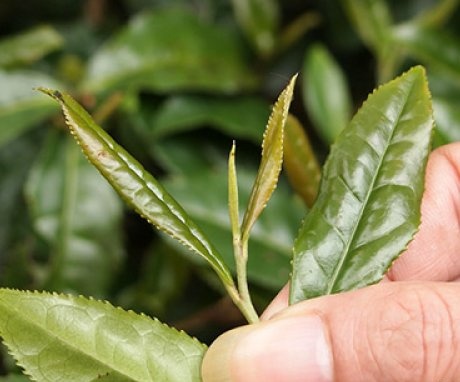
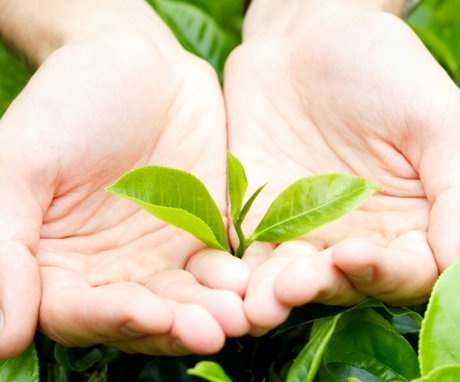

I tried to grow tea on my windowsill in a pot, in the third year the plant died, most likely from the cold, that year they opened the window a lot. In any case, the tea was more of a decorative value. No one liked the tea leaves.